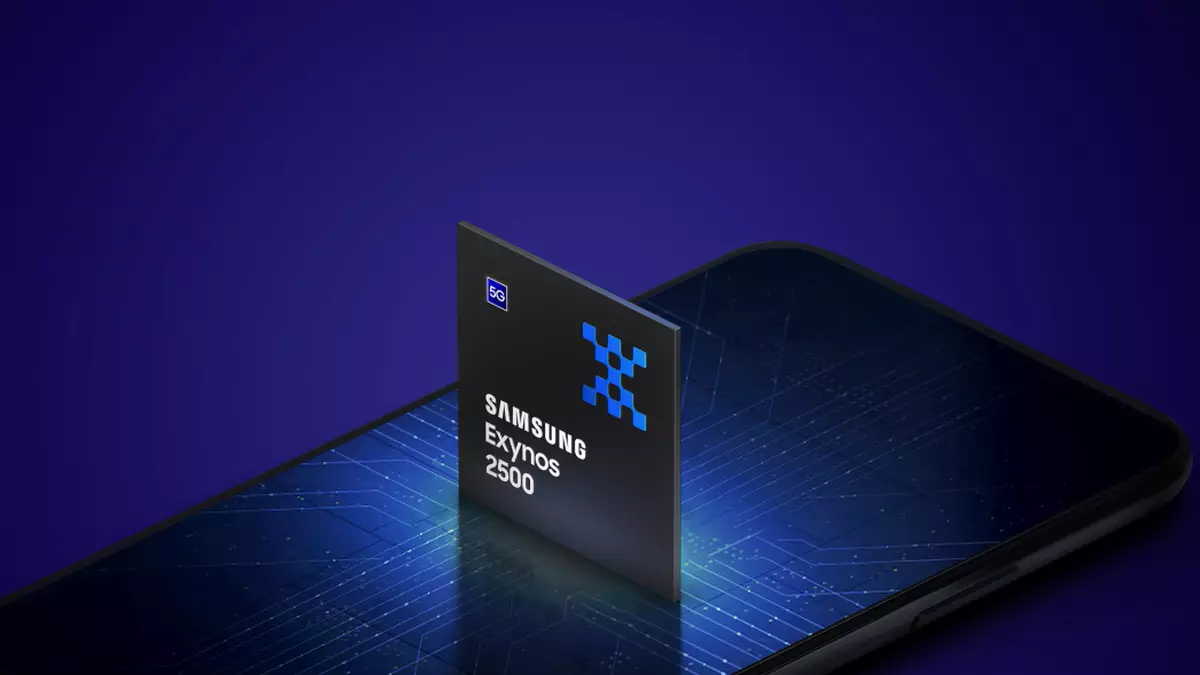Samsung has taken a bold leap with the introduction of the Exynos 2500, a chipset crafted using cutting-edge 3nm process technology. This strategic move marks a significant departure from its predecessors, closing the performance gap that has long plagued Samsung’s Exynos lineup. With the Exynos 2500, users can expect a staggering 15 percent boost in CPU performance and a breathtaking 39 percent increase in on-device AI capabilities compared to the Exynos 2400. This isn’t just a minor upgrade; it’s a revolutionary leap that could redefine user experiences in smartphones.
The smartphone realm has been fiercely competitive, with Apple, Qualcomm, and more recently, Huawei making significant advances in chip technology. Samsung’s commitment to transforming the chipset landscape suggests both confidence in its engineering prowess and determination to reclaim its industry-leading position. The launch of the Exynos 2500 during the upcoming Galaxy Unpacked event demonstrates Samsung’s strategic focus on synchronization between hardware and cutting-edge software, appealing to tech enthusiasts and casual consumers alike.
A Technological Marvel in the Making
At the heart of the Exynos 2500 lies a tri-cluster CPU configuration, which consists of a Cortex-X5 core, two Cortex-A725 cores, and five additional Cortex-A725 cores, alongside two Cortex-A520 cores. By employing Samsung’s fan-out wafer-level packaging technology, the Exynos 2500 is not only fast but also remarkably power-efficient, addressing one of the most significant pain points for mobile device users: heat generation during intensive processing tasks.
In an era where multitasking is the norm, the ability to effectively manage power consumption without sacrificing performance is no longer an option but a necessity. The implications for gamers and content creators are staggering. With support for AMD’s RDNA 3 architecture, the GPU can produce faster frame rates and support ray tracing—bringing console-quality gaming to mobile devices and making the Exynos 2500 a potent contender for those who crave high-performance gaming experiences on their smartphones.
Camera Capabilities: Pushing Boundaries
In our Instagram-centric society, a smartphone’s camera capabilities can often be its most marketable feature. The Exynos 2500 accommodates up to a dazzling 320-megapixel camera sensor, with support for multiple cameras, which only elevates the potential for photography. Coupled with 8K video recording at 30fps and 4K at 120fps, this chipset positions itself as a game-changer for both casual photographers and professional videographers alike.
It’s this versatility that speaks to the Exynos 2500’s broader ambitions. Samsung has not merely built a responsive chipset; they are cultivating an ecosystem where photography, gaming, and general multitasking can operate seamlessly. As a consumer, being able to capture stunning visuals, engage in seamless gaming, and swipe through apps without delays is an attractive prospect.
Connectivity: Looking Beyond Traditional Boundaries
One of the standout features of the Exynos 2500 is its ability to connect with Low Earth Orbit (LEO) satellites, enabling users to send emergency texts and calls from virtually anywhere, even without traditional cellular coverage. In an age where connectivity is paramount, this feature is not just revolutionary; it’s essential.
While some skeptics may argue that such features are unnecessary for the average user, it’s critical to view this from a broader perspective. In natural disasters, remote areas, and myriad scenarios where traditional communication towers fail, the ability to connect via satellite may well save lives. Samsung is clearly positioning itself as not just a tech provider but a safety net, highlighting the notion that convenience should also meet responsibility.
Raising the Bar for the Competition
With the Exynos 2500, Samsung is not merely participating in the race; it’s actively reshaping the game. By producing a chipset that boasts improved performance, exceptional camera capabilities, and unprecedented connectivity, Samsung is forcing competitors to step up their game.
The importance of innovation in tech cannot be overstated, especially in a rapidly evolving industry. The Exynos 2500 signals a newfound seriousness in Samsung’s approach—an initiative to not just catch up but to leap ahead. The upcoming Galaxy Z Flip 7 is set to showcase these advancements, and it will undoubtedly turn heads.
As we await the full-scale launch, it’s evident that the Exynos 2500 is more than just another chipset; it’s a reflection of Samsung’s ambition and a testament to what the future of mobile technology can hold.


Leave a Reply